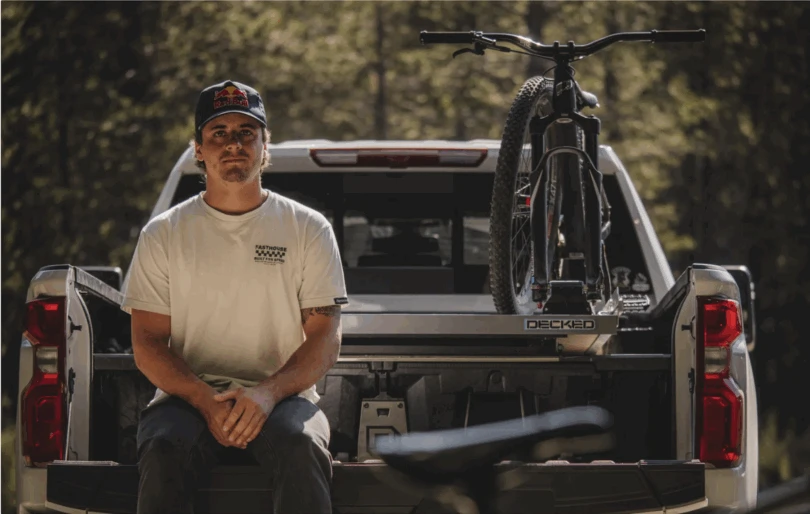Your adventure rig has been upgraded with a new winch bumper and winch. You’re excited to explore. But now that you have a winch, how do you use it?
These basic winching tips and tricks will help you winch safely and correctly during vehicle recoveries. Arming yourself with proper winching techniques could potentially save your life or others around you.
Winches are like vehicles. They need to be learned about, maintained, and kept in tip-top shape. By doing this, you’ll understand critical basic winching skills before a vehicle recovery is needed.
In addition to learning various straightforward winching techniques, carrying a basic recovery kit with you is key. It’ll make your life easier when the going gets rough.

Before Using Your Winch
If you never used your vehicle’s winch, you’ll need to stretch its rope first. No matter if it’s steel or synthetic rope, stretching your winch line will help stop it from sinking between other rope layers, potentially crushing the line. Instructions on how to stretch a winch line are easily found online.
Basic Winching: Top Tips
Once you’re ready to use your rig’s winch, following these winching tips will help ensure a successful and safe vehicle recovery:
- Access the situation from all angles before beginning to winch.
- Stop, slow down, think through all of your recovery options.
- Determine who is responsible for winching, rigging, and being recovered.
- Understand your equipment and use the safest methods possible when extracting a vehicle.
- Recognize nearby danger zones before using a winch.
Tip: Bystanders should be at least the rope’s length away from the vehicle that is doing the winching. This helps ensure no one gets hurt in the event of a rope failure. - Wear heavy-duty gloves during the recovery process. They’ll save your hands from rope burn when using synthetic, or potentially cutting yourself on burrs or slivers on steel rope. Winching gloves also improve grip.
- Put some weight on the line using a winch damper, heavy backpack, or thick jacket on each winch line before winching. It’ll help force the line down toward the ground if the rope were to break.
- If the winch line is under tension, meaning it’s taut and ready to pull or is already pulling, never step over it. Picture a line snapping while you’re standing on top of it! Enough said.
- If you’re winching a vehicle out of harm’s way, operate it from a safe distance or with you behind your vehicle’s open door or inside the vehicle itself. If the winch line or rigging breaks, your vehicle would take the damage rather than you.
- If using an open-looped system (i.e., a hook), always remember to “hook up” the winch’s hook with the opening pointing upward. This will help the winch line fall to the ground instead of through the air should a rope failure occur.

Proper Recovery Points
Learn which points on your adventure rig are legitimate recovery points versus tiedown points. If unsure, check your vehicle’s owner’s manual or with the manufacturer of your aftermarket winch bumper. Many high-quality winch bumpers are designed with multiple heavy-duty recovery points, which metal or soft shackles will easily connect to.
Note: Never use a tiedown point or the ball on a hitch for vehicle recovery! Doing so could inflict serious harm to a vehicle or, even worse, people.
Regularly check your vehicle’s recovery points to ensure they’re not rusted through (this is particularly important when living in an area that uses road salt). By keeping recovery points up to snuff, your vehicle will withstand the forces bestowed upon it during the winching process.

Types of Rope
Synthetic Rope
Synthetic rope is lightweight and easy to handle during the winching process. However, if not cared for properly, it can degrade from the inside out or suffer from UV damage. Additionally, synthetic rope is prone to damage by abrasion if dragged on rough surfaces when winching.
Make sure to use a heavy-duty rope sleeve/chafe guard over the obstacle when winching. Some winch manufacturers supply an abrasion sleeve on their line, but if yours doesn’t, you can purchase one separately.
Regularly inspecting and cleaning synthetic rope after dusty or muddy trail runs will lengthen the life of synthetic winch rope. This is because grit can degrade the rope’s fibers from the inside out.
To clean a synthetic line, simply unspool your line and dunk it into a bucket with water and mild soap.
Take the rope, and by starting at one end and working your way to the other end, scrunch it together and swish it around in the bucket. Once done, rinse the entire rope with clean water following the same scrunch-together process.
If sections of your synthetic rope are noticeably fuzzy or have slices in them, it’s time to get new rope. Never use a comprised rope!

Steel Winch Rope or Wire Cable
This is abrasion-resistant, durable, and very strong. Conversely, steel cable weighs more and can store more potential energy than its synthetic counterpart. But it can also rust if neglected.
No matter which rope you run, make sure to use gloves during a vehicle recovery. Trust us — you’ll thank us later.
Shackles, Snatch Blocks, and Rigging
In addition to heavy-duty gloves, owning a basic recovery kit including two shackles, a snatch block, and various recovery straps (like a tree trunk protector and kinetic recovery strap) is suitable for winching. Purchase the best quality you can afford.
Reputable companies like WARN Industries or ARB USA manufacture top-rated premium products. The last thing you’d want is a recovery failure due to cheap products.
Shackles
Shackles allow for different rigging configurations and can be connected or disconnected quickly. No matter if you purchase rigid metal shackles or synthetic soft ones, understanding their working load limits is critical. Make sure each product’s weight rating is suitable for your vehicle.
If running metal shackles, hand tighten the metal screw pin until tight and then loosen it a quarter turn. This allows the pin to be removed much easier after a recovery than with pliers and prayers.

Snatch Blocks
There are many types of snatch blocks, pulleys, or recovery rings on the market. Although different styles, they essentially do the same job. Snatch blocks (or pulley blocks) are used to dissipate loads correctly across a tensioned winch line. They use mechanical advantage to allow you to pull more weight than the winch’s capacity when rigged properly.
Snatch blocks or pulleys can also change the pulling direction of a winch line without damaging it.
Note: Even though you just increased your pulling capacity, using a snatch block will cut your winch’s speed of operation in half each time you double it back to an anchor — slowing the recovering process.
So if you have a 10,000-pound winch on your rig and you run a line to an anchor with a snatch block, then back to the front of the rig, you’re now able to effectively pull 20,000 pounds. However, you’ll be going at half the line speed and use twice as much rope.

Straps
Although kinetic recovery straps are great for vehicle-to-vehicle recoveries, they are not to be used around a tree or large boulder as a static tree strap.
Tree straps, otherwise known as static straps or tree trunk protectors, are an important bit of kit for the winching process. They can be used to anchor a winch line to a tree trunk or a large boulder before recovery if another vehicle isn’t around to be anchored to.
Static straps are much less damaging to trees than chains or wire rope (don’t use the latter items, as you will likely kill the tree after recovery). Tree straps are also lighter in weight.
After placing the strap around the base of a large tree or boulder (making sure each is up to the task), connect the strap with a shackle, attach your winch line to the shackle, and pop a damper on the winch line before starting recovery.
Note: Tree trunk protectors, or static straps, are non-elastic. They should not be used for vehicle-to-vehicle recovery. The lack of elasticity can damage either rig.

Educate Yourself
No one becomes an expert the first time they use their winch. Practice using it and mock-up rigging equipment. Get a couple of buddies together and set up various recovery scenarios so you get familiar with your equipment as well as its limitations.
Understand how to use your winch before using it. Becoming accustomed to using your winch, and associated recovery accessories will not only improve any recovery situation, but it’ll also help keep you cool, calm, and collected during the process.







